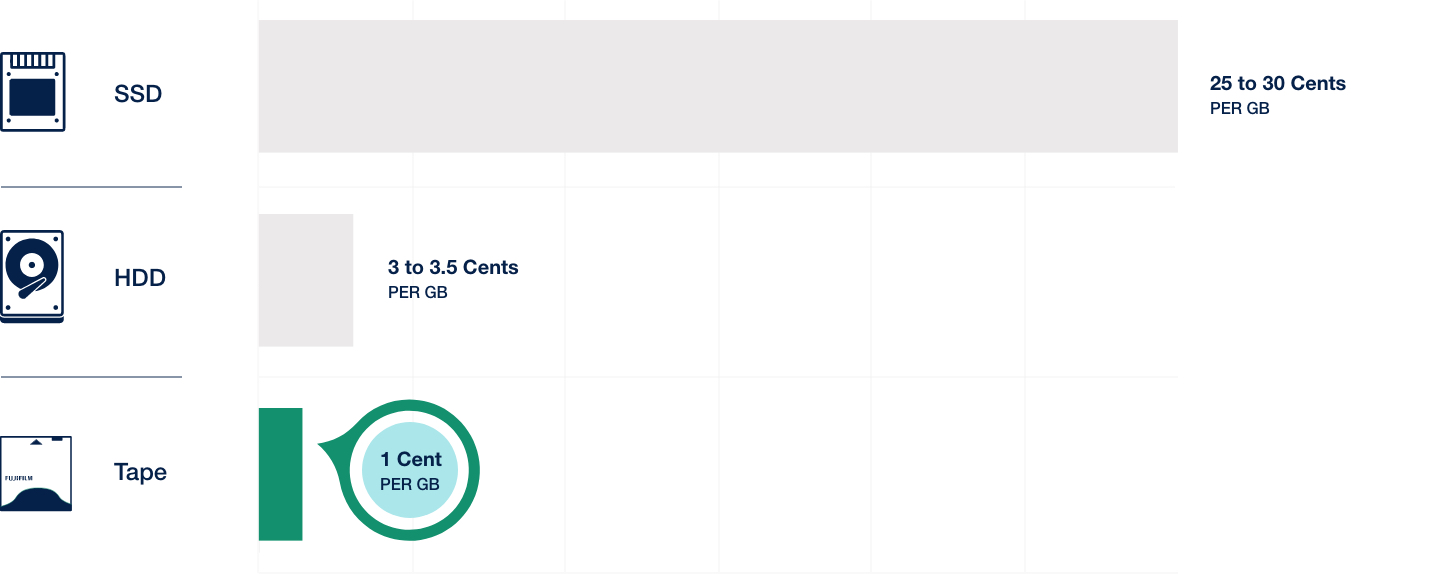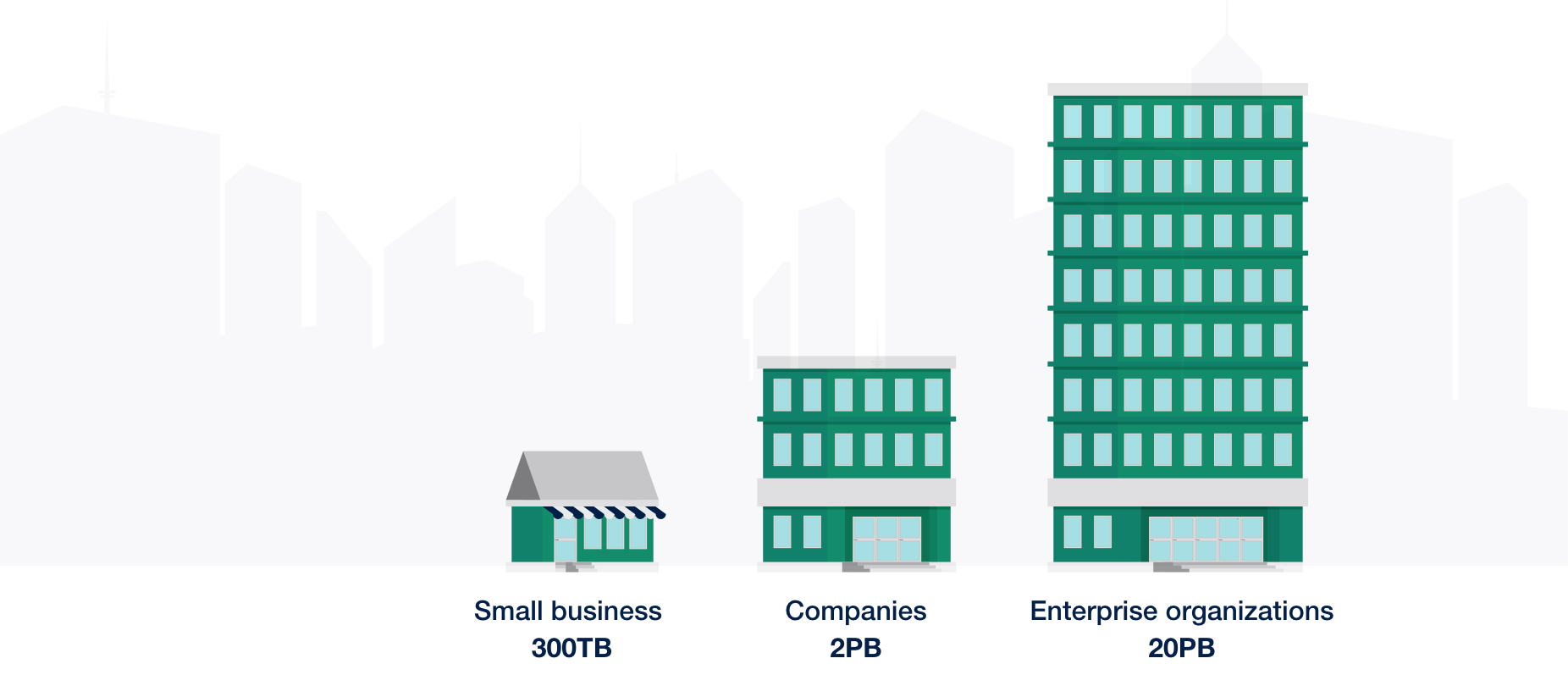Global worth for the data storage industry in 2023 was more than $247 billion, according to Fortune Business Insights. That includes data storage units, hosting and cloud services, as well as information archiving. Those numbers trickle down, creating large expenses for businesses that need to store or archive data.
But not all data is equal, and it doesn’t all require prime real estate in your cloud data warehouse. According to one study, companies are wasting more than $60 billion annually paying for cloud storage capacity they don’t need. One reason for that is businesses are often keeping cold data in storage meant for warm data.
Watch the video below to learn more about the cost of data and how FUJIFILM can help you save money by using tape for cold data.
Data costs money. Depending on how cold data is stored, the associated costs can range from one cent per GB all the way up to thirty. Here’s a breakdown of some data storage cost averages by type of storage:

This online data storage tool, developed by storage economics expert Brad Johns Consulting, calculates 5- and 10-year scenarios for the Total Cost of Ownership when using automated tape storage, disk-based and cloud-based archive storage.

How much you should pay to store data depends on how you’re using the data. You can see from the breakdown above that tape is by far the most cost-effective way to store data, but it’s not the best way to store all data.
That’s because you don’t use all data the same way. Consider this example: You have old invoice information you’re required to keep for 7+ years for tax purposes. The likelihood of someone in your business needing to access 7-year-old invoice information on a daily or even monthly basis is low. It’s possible no one will ever look at that information again.
Contrast that scenario with this one: You have new invoice data from the past month or two. There’s a great likelihood someone may need to access that information regularly. They may need to collect open AR or process accounts payable, assist clients with billing questions or complete financial reports for the quarter.
Clearly these two types of data are not in the same category. They should be stored differently, which is where tiered storage comes in.

The data needs to be immediately available — literally at a person’s fingertips. This information is highly active and called up on a regular basis. Customer account and order information, inventory figures and current employee schedules or payroll information are just some examples of data that might call for this storage tier.

Data that isn’t used on a daily basis or which isn’t new data that might be needed in the short-term may fall into this tier if it’s still something you have a reasonable expectation of using in the near future. For example, paid invoices and statements on accounts from the past couple of months or last year’s sales reports might fall into this tier.

You can save money and time by archiving data outside of daily processes while ensuring it can be easily recalled because it’s still “active.” For example, keeping the entire order history for a customer in your CRM system can become cumbersome, causing response time delays for clients and employees alike. However, if the customer is still active, you might want to provide a way for employees to look at the old data if questions arise. In this case, active archive could be a solution.

Consider the same CRM system example from the above tier but apply it to customers that haven’t been active in more than a year. The customer may return at some point, and you don’t want to completely remove your records of them. But you could use long-term archive storage to hold the data outside of daily processes until it’s needed again.
There are numerous benefits of segregating your data into tiered storage. It reduces the burden of data on your systems, makes data you need right now easier to find and can help you level costs for storing all your data.
How much can you save by leveraging tape for data storage? Consider the average amount of data various organizations manage:

A mid-size company managing 2PB of data would be managing 2,000TB. If that was stored entirely in solid state drives (not something that’s especially feasible), the cost would be roughly $500,000. Hard disk storage is more feasible but still pricey, ringing in at around $65,991.
Tape storage for that amount of data would be just $20,000 (or less).

This is a simplified example, obviously. A business with 2PB of data may need to hold some of it in active storage because it’s not all cold data. However, for most organizations, 60% or more of data is cold, which means it could be stored on tape. For the average business, that would lead to thousands or even tens of thousands of dollars saved annually.
